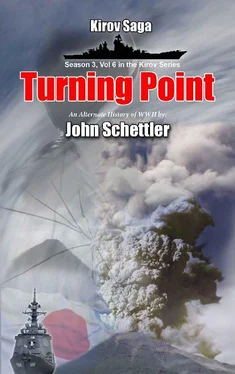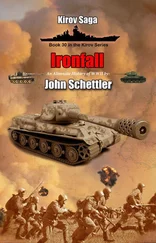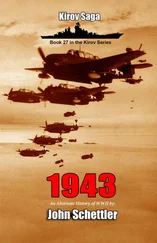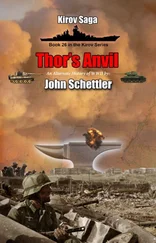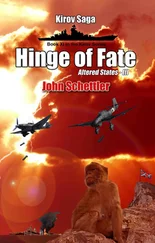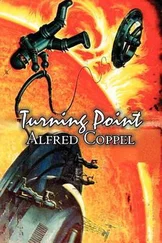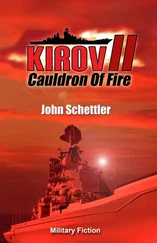Kirov Saga:
TURNING POINT
By
John Schettler
Dear Readers,
The chase is on, yet no one on the Allied side really knows what’s at stake. Tovey has another mystery on his hands in those strange photographs that have been delivered to Hut 4 at Bletchley Park, but Fedorov is too far afield to solve the riddle for him. So we’ll begin where we left off, as Kaiser Wilhelm and the Goeben attempt to slip by the Royal Navy with their hidden cargo.
The long awaited Soviet Winter Counteroffensive will be presented next, a real turning point in the war that is often overlooked by historians in Fedorov’s books. It wasn’t really the loss of 6th Army at Stalingrad, or the grinding attrition of Kursk that turned the war in the east. It was that desperate and stunning Russian counteroffensive in the winter of 1941-42.
After that we move to the Pacific again, where Churchill has a most difficult decision to make, and “the Rock of the East” gets a new assignment. Then, one of those moments I truly love in this process happened while I was wading into that segment of the story. Like the strange dream that took us to Admiral Knight in the Siberian Intervention, another of those moments occurred while I was staring at a map of the great barrier islands, Sumatra, Java, Bali and east to Timor, Japan’s final objective in their stunning opening offensive of the war.
What resulted from that muse will be much in keeping with the general premise that first bloomed in the opening novel, Kirov . Yet it creates a thorny problem for all those involved, and will weigh heavily in the outcome of the Pacific War. Sometimes a Turning Point lurks in some quiet, insignificant corner of unrecorded history, like the hidden Pushpoints Professor Dorland might expound upon from his Berkeley Arch facility. Other times it comes in the violence of thunder and lightning, and in a way no one, not even I, expected when I started writing the opening chapters of this volume.
By the end of this novel we will have reached April of 1942, with the Allies contemplating offensive operations for the very first time. Yet 1942 remains a year of precarious and quavering balance. The Axis powers reach their high water mark, but still find the Allies unbowed. Britain holds on in the Libyan desert, and now boldly contemplates the end of Rommel’s Afrika Korps in one final battle. The Soviets struggle to consolidate hard won gains from their Winter War, but the coming of warmer weather and good ground after the Spring thaw will see Germany renew its offensive, and with newly equipped divisions that are even more potent than before.
Each side will have real opportunities and also vulnerabilities, for while the Turning Point comes here in this novel, it is not fully appreciated or understood by those struggling in the thick of the fray. There are still two more volumes in this season, and a lot of war to cover in 1942. The conflict in the west will be much different, as the Allies must plan how to deal with the French colonies in Northwest Africa, and the issue of Spain and Gibraltar. Germany will not want those vital territories to fall uncontested, and OKW must find badly needed divisions to face the threat slowly blowing in from the Atlantic like a storm at sea. Yes, the Americans are in the war now, and they are coming to the story soon as Eisenhower makes his debut in the war in the west in Book 23.
You will forgive me as I leave our favorite battlecruiser for a time in this novel to focus on these many operations that need to be covered. But I assure you that we will soon be back with Karpov, Fedorov, Rodenko, Nikolin, Tasarov, Zolkin, Orlov, Dobrynin and all the rest. Things in the Pacific are about to get very complicated, but for now… the winds of war are swirling in listless currents, and find in some lone forsaken place, a turning point.
Enjoy.
- John Schettler
“Slow animals always become prey in the end.”
― John Connolly:
The Wolf in Winter
Thesun was low on the horizon, about to be swallowed by the blackness of the sea. There, sharply silhouetted in the distance and crowned in gold, were two enemy ships. Kapitan Heinrich had thought they were battleships, and knew his only course was to attempt to break away. He didn’t need orders for that, for even with Goeben by his side, he would be badly outgunned. Increasing to 30 knots had not been enough, which puzzled him at first, for he knew the British King George V class battleship topped out at 28 knots. Yet still they came, even closing the range at that speed, which told him his initial assessment of these ships had to be wrong.
But what could they be? They weren’t battlecruisers, as both Renown and Repulse had been dealt with off Fuerteventura. Could these be the new large cruisers Naval Intelligence had warned about? It was thought that those ships would not be commissioned for some months, but something was out there, firing at him with gunnery patterns that made it look like a King George V class ship, and a silhouette to match. Yet they were running like the wind. Even at his best speed of 36 knots, he had only barely edged away, opening the range ever so slowly. But he knew he could not hold this speed for very long. He had perhaps an hour, in which he would burn off all the fuel he had so greedily taken on from the Ermland before this encounter, and Casablanca was very far away.
At the urging of Kapitan Falkenrath on the Goeben , they had decided to split. It was the only thing to do. To begin with, an engagement here would risk the loss of all their valuable cargo in one place. Darkness and the coming storm would prevent any air operations off Goeben , and all her main gun turrets were mounted forward. At 36 knots, a scenario where she would need to fight a gun duel while in flight with an enemy riding her wake, never entered the minds of the designers who built her. The ship was built to hunt and kill, with all its teeth up front like a shark. The plans for the Goeben were drafted knowing the fastest British Capital ship was HMS Invincible , and the Goeben could even outrun the speedy British 8-inch gunned cruisers…. But not these cruisers, if that is what these ships were. If they had been County Class heavy cruisers, they should already be lost in the gathering darkness, left well behind the foaming wakes of the two swift German ships.
Yet there they were, the bright wink of their gunfire now barely discernible against that blazoning sun. The two senior officers on the German ships waited through tense moments, flashing lantern signals at one another until a decision was reached. They would go their separate ways, and the turning point was selected at a specific time. Kapitan Heinrich would wheel about, making a bold challenge to his pursuers, while Goeben veered off to the east. He wanted to hold the British here for a moment, giving the light carrier the chance to slip away, and it was looking like that was going to work.
Three booming salvoes were fired, with high golden water splashes illuminated by the last rays of the dying sun. He clearly saw the enemy guns answering, the big rounds falling very close off his port side. Then his ship passed into a squall line, the sudden rush of rain very heavy, the seas higher. Even though he was running full out, the ship’s true speed might be only 33 to 34 knots now in the choppy swells. But the gloom and rain imposed a protective masking curtain between the two sides.
Читать дальше
